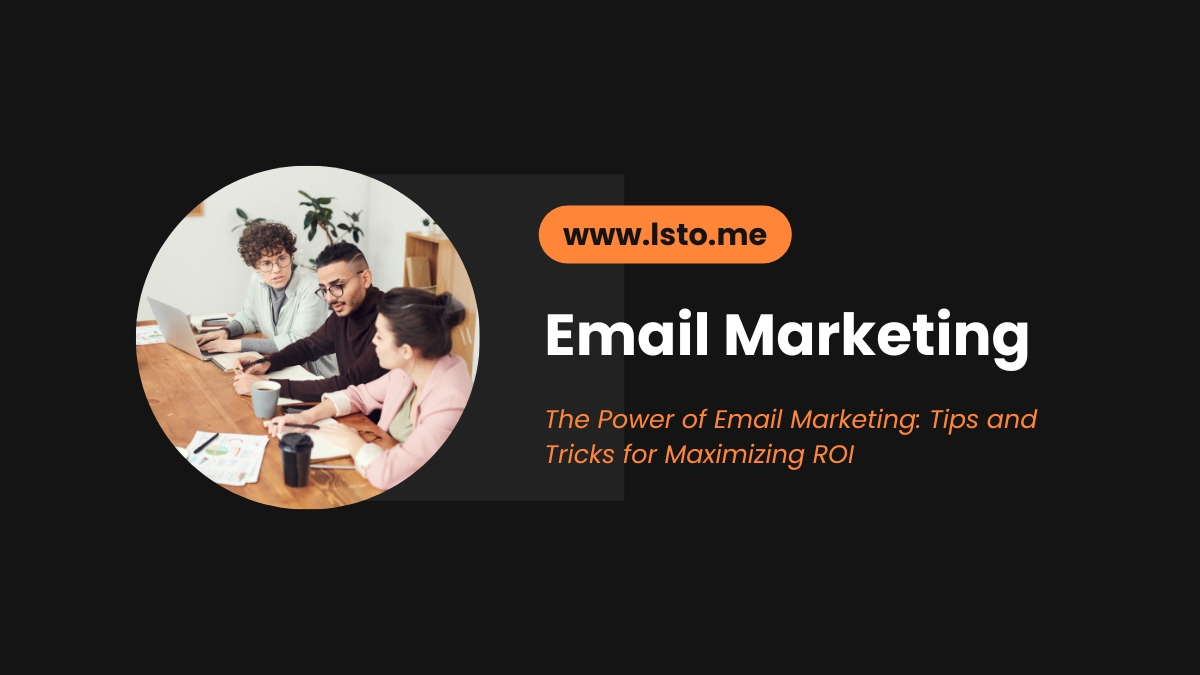
Email marketing can be a powerful tool for businesses of all sizes to reach and engage with their target audience. Here are a few tips and tricks for maximizing the return on investment (ROI) of your email marketing efforts:
1. Segment your email list
By segmenting your email list based on demographics, behavior, and purchase history, you can create targeted campaigns that are more likely to drive conversions and increase customer engagement. Segmenting allows for more personalized messages that speak directly to the needs and interests of different segments of your audience.
Creating a segmented email list can help you identify which emails are being opened the most or generating the best response. This enables you to optimize your content and better understand who your target audience is so that you can craft even more effective campaigns in the future. With an organized list tailored to specific customer profiles, it becomes easier to target individuals with relevant offers they’re interested in.
2. Personalize your emails
By personalizing emails to their recipients, marketers can increase open and click-through rates as well as create a better user experience. Personalization makes the recipient feel like the email they are receiving is specifically tailored to them, increasing its relevance and value.
Personalized emails can be customized with each individual’s name, preferences, and past interactions with your brand. This information allows you to create highly targeted messages that encourage readers to engage with your content. For example, if you know that someone has recently purchased a product from your store, you can send them an email offering discounts on related items or services. By taking into account each subscriber’s interests and behaviors, you can ensure that your message resonates with them more than generic mass mailings do.
3. Optimize your subject line
It’s the first thing that recipients see, so optimizing your subject line is key for maximum engagement.
Creating an effective subject line requires careful thought and consideration, as you need something catchy and relevant enough to make readers want to open your email. You should avoid generic phrases like “newsletter” or “monthly update,” as these won’t stand out in crowded inboxes. Instead, try to craft a unique statement that engages the reader while still being true to what your message contains. Keep it short and sweet—no more than 50 characters—to ensure that it’s fully visible on mobile devices. Additionally, make sure you’re using words and phrases with trigger words such as “free,” “exclusive,” or “limited time.
4. Use a clear call-to-action
Email marketing is an effective way to reach out to potential customers and draw them in with a compelling call to action. By including a clear and concise CTA in your emails, you can easily encourage subscribers to take action and make it easier for them to find what they need.
A good call-to-action should be direct, give readers specific instructions on how to proceed, and provide value. For example, if you are trying to increase website traffic from your email campaigns, you might include a link that leads directly to the page where customers can learn more about your product or service. This will make it quicker and easier for them to take the next step.
5. Test and analyze
To maximize the success of your email campaigns, it is important to A/B test different elements to see what works best. This means testing two or more versions of a single element in your campaign, such as subject lines, email content, and call-to-actions (CTAs).
By running an A/B test for each element of your campaign, you can get a clear understanding of what resonates best with your audience. With this data in hand, you can optimize future emails by using the most successful version from the previous tests. Additionally, this testing process allows you to establish key performance indicators which will help you measure the success of future campaigns.
6. Make it mobile friendly
With more than half of all emails opened on mobile devices, companies must ensure their emails are optimized for smaller screens. This will help them create a successful outreach strategy and maximize customer engagement.
There are several steps businesses can take to make sure their emails are mobile-friendly. First, they should ensure their content is concise and easily understood in just a few sentences. They should also use plain text formatting rather than HTML or other coding languages as these may not properly display on different screen sizes. Additionally, images should be no larger than 600 pixels wide and include an ALT tag so readers can still understand the message when images don’t load correctly on certain devices or browsers.
By following these tips and tricks, you can improve the ROI of your email marketing efforts and drive more conversions and sales.




